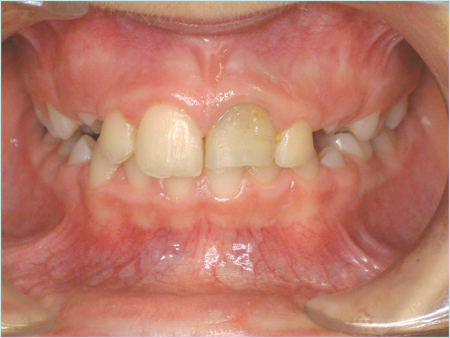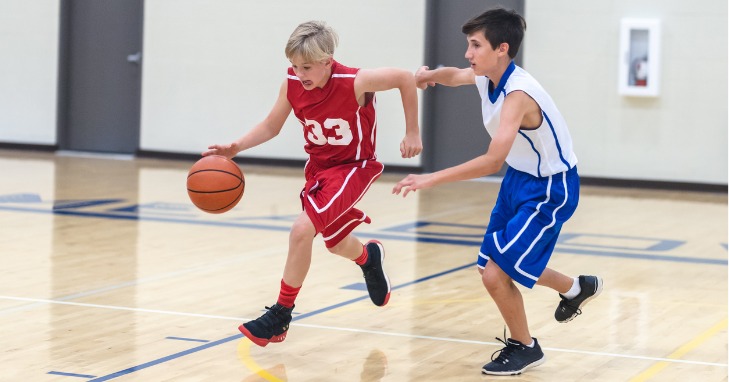Braces might seem to be all the protection teeth need while playing sports. But nothing can be further from the truth. Teeth need another form of security while on the field; neither braces nor clear aligners offer the shelter teeth need, but a mouthguard can.
Youth Sport
Physical activity and sports are often a significant part of children’s and adolescent’s lives. Being active reduces the risk of obesity, improves cardiovascular fitness, and contributes to the growth of healthy bones, ligaments, and tendons, and helps with coordination and gross motor skills. Many sports have seen exponential growth in the participation of young people.
Active kids undergoing orthodontic treatment should consider creating a plan to protect their teeth. Once braces or clear aligners are in place, the old mouthguard will no longer serve, and a new one is required. The mouthguard does more than just protect the teeth; a knock from a ball to the face can cause braces to cut the inside of the cheek, and while these injuries heal fast, it can be uncomfortable to eat for a couple of days, which can be easily avoided by wearing a mouthguard.
The more serious issue relates to the pulp (nerve) of the tooth as it may be affected by trauma to the tooth. A severe knock to the tooth may kill the pulp of the tooth or it may reduce the blood flow. If the pulp dies, often it darkens and may eventually become infected (see image below). This is a complex issue and is often resolved by removing the dead pulp and performing a root canal treatment. Occasionally a discoloured tooth may even need to be bleached.

Orthodontic tooth movement has been shown to place minor stress on the pulp. In most circumstances this is insignificant. However, a tooth with a history of trauma or teeth-sustaining trauma may have a compromised pulp and the added burden of the orthodontic tooth movement may be more than the pulp can tolerate so the orthodontist may have to cease treatment on the affected tooth immediately.
It is therefore important to contact your orthodontist immediately following the trauma to assess the extent of the trauma and work through any strategies based on the individual circumstances.
You can see that a mouthguard adds a level of protection during sporting activities which is the first line of protection.
Types of Mouthguards
Mouthguards can be either custom-made or mouth-formed. You can get a custom mouthguard from a dentist or professional mouthguard provider after taking an impression of the mouth. A mouth-formed mouthguard, also known as a ‘boil and bite’ mouthguard, is made to fit a player’s mouth by heating a thermoplastic rim with hot water, placing it in the mouth, and molding it by biting.
The boil and bite mouthguards are ideal for people with braces because teeth are in regular movement, so the mouthguard becomes loose or uncomfortable and may not provide the protection teeth need. The mouthguard should be reheated according to instructions and molded to fit the current position of teeth or start fresh with a new one.
It’s best to take your mouthguard with you to appointments so your orthodontist can check the fit and recommend if the mouthguard needs adjusting or changing.
High-Risk Sports
Some sports have higher risks of damaging the mouth than others. All contact sports are considered high risk for injuries to the mouth and jaw. An elbow to the face can cause braces to break or a tooth, gum, or jaw to be injured, and a ball or stick can do even more damage. If your child plays any of the following sports, the recommendation is to wear a custom mouthguard – basketball, boxing and other martial arts, AFL, hockey, netball, rugby, squash, skateboarding, skiing, soccer, and surfing.
Other Risky Activities
Accidents can happen anytime; sporting events aren’t the only situations posing a risk. Climbing on play equipment, wrestling with their brother, or a game of backyard basketball can result in the same injury as a match of contact team sport. Encourage your child to think about the risks to their teeth with any activity they do. But instead of quitting, if they are at risk of a mouth injury or an orthodontic break, encourage them to use their mouthguard and always be careful.
Kids can still be kids when they have braces, but it’s always wise to take a little extra precaution.
A Perfect Bite While Participating in Sport
There’s no need for orthodontic treatment to put an end to your child’s sports pursuits. Orthodontists have treated many elite-level sportspeople and constructed mouthguards over their appliances. Sure, a little extra effort may be required to ensure the mouthguard fits before each game, but a few minutes spent checking a mouthguard can prevent months of treatment because the braces or teeth were injured.
There doesn’t need to be any compromise in the quest for the perfect bite. The ideal bite is when the arch is an almost perfect U-shape, the teeth on the top and bottom arches touch each other, and everything is in the correct position.
Your child can have it all – perfect teeth in the long term while not missing out on sports and hobbies they love. Attending regular check-ups with the dentist and adjustments at the orthodontist will keep treatment progressing.
Teeth should be protected during sport while undergoing orthodontic treatment and post. With the perfect bite in place and orthodontic treatment finished, it’s best to invest in a custom mouthguard that offers more protection than a shop-bought, boil-and-bite mouthguard.
Ready to find your child an orthodontist? Use our directory to find one near you!
Source: https://www.theorthodontists.com.au/blog/sports-and-orthodontics-protecting-your-child-s-smile-on-the-field

